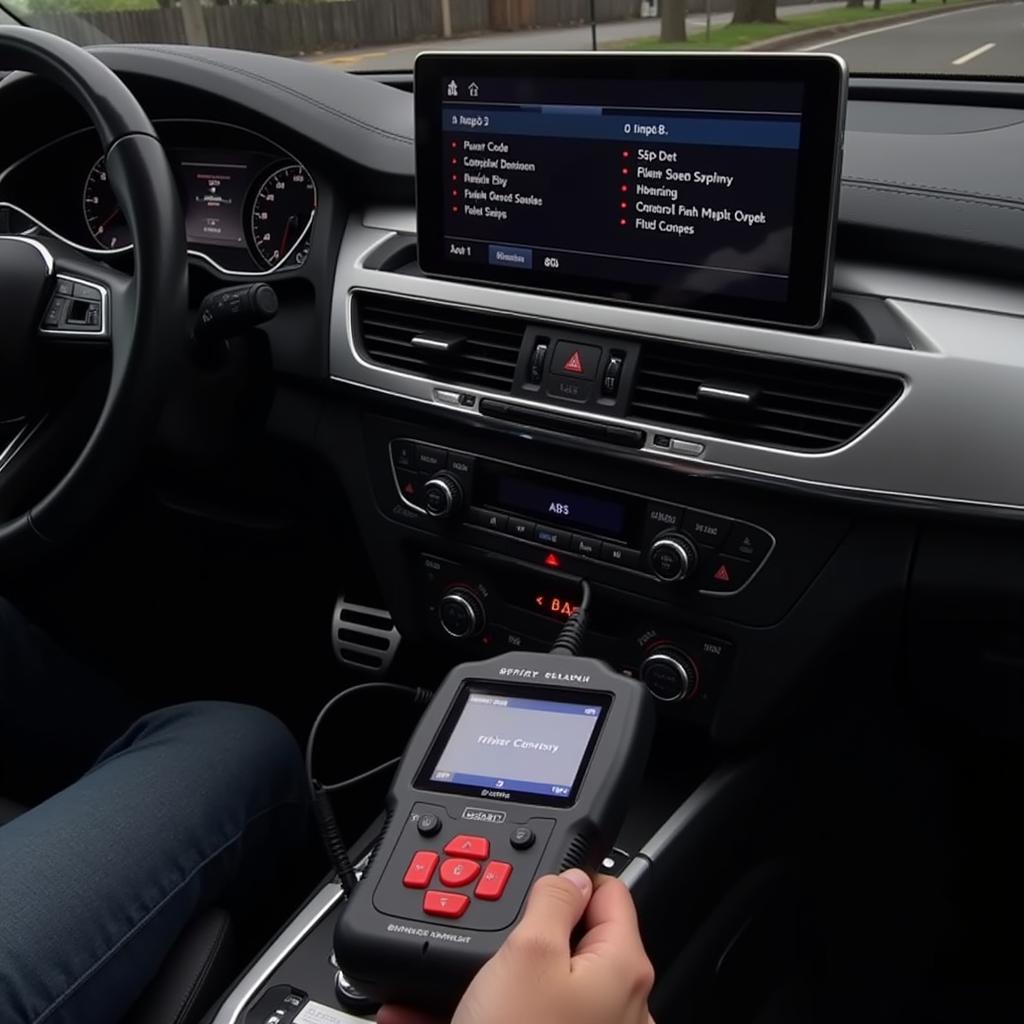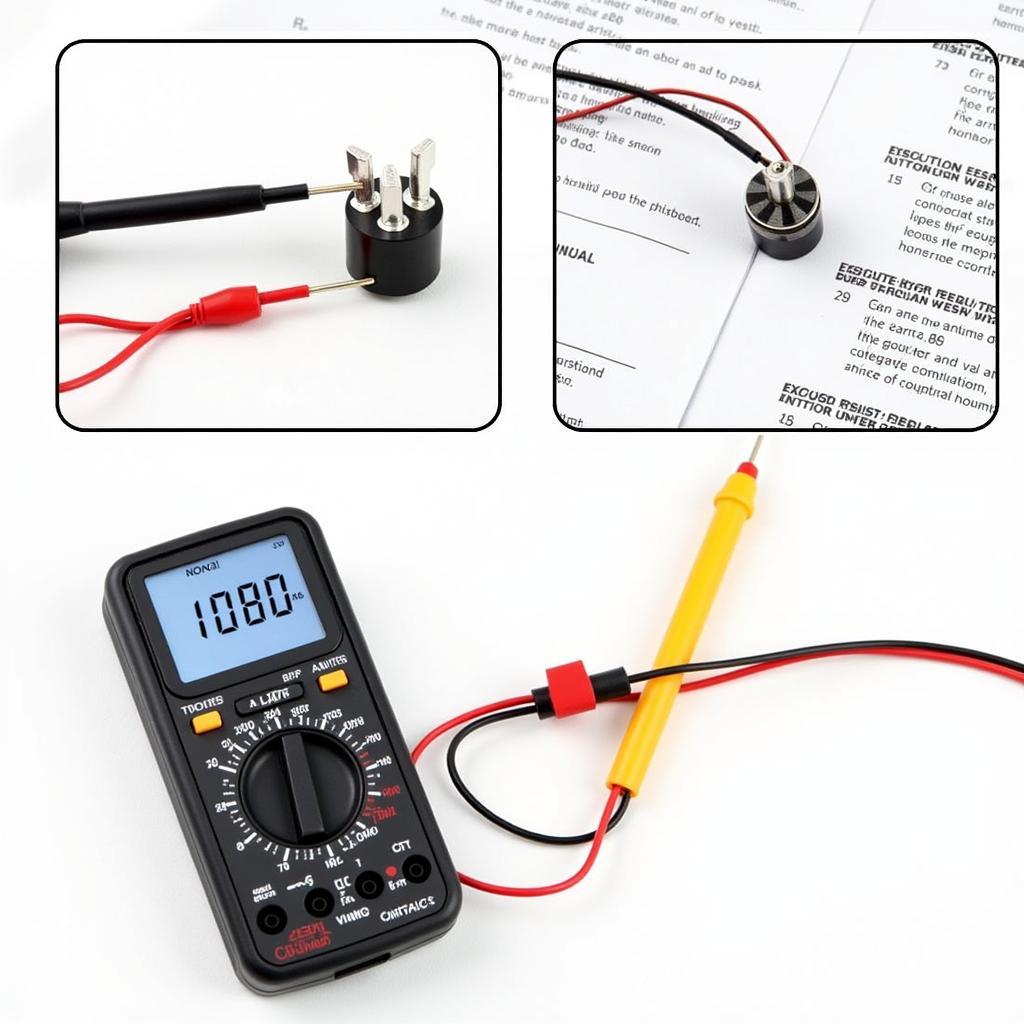The “few seats available” warning on your car’s dashboard might seem confusing at first. You know there are empty seats – so what’s the issue? This warning, often accompanied by an image of a passenger seat with an airbag symbol, usually indicates a problem with your vehicle’s Occupant Classification System (OCS). This system is crucial for determining whether the front passenger seat is occupied by an adult, child, or child seat, and adjusts airbag deployment accordingly to ensure maximum safety.
Understanding Your Vehicle’s Occupant Classification System
Modern vehicles prioritize safety with sophisticated systems like the OCS. This system utilizes sensors in the passenger seat to detect weight and pressure. Based on this information, the OCS determines if the passenger is an adult, a child, or if a child seat is in use. This data is critical for the airbag control unit, as it determines the appropriate level of airbag deployment in case of a collision.
For instance, if the system detects a child or a child seat, it might deactivate the front passenger airbag or deploy it with reduced force to prevent injury. If the system malfunctions, it can trigger the “few seats available” warning, even if the seat appears empty.
Common Causes of the “Few Seats Available” Warning
A range of factors can disrupt the OCS and trigger the warning light. Here are some of the most frequent culprits:
- Faulty Seat Sensors: Like all electronic components, the sensors in your car seat can wear out or malfunction over time. A faulty sensor might send incorrect signals to the airbag control unit, leading to the warning.
- Wiring Issues: The wiring connecting the seat sensors to the vehicle’s electrical system can become loose, damaged, or corroded. This disrupts the communication between the sensors and the airbag control unit, potentially causing the warning to appear.
- Software Glitches: Like any computer system, your vehicle’s software can experience glitches that affect the OCS and trigger the warning.
- Aftermarket Seat Covers: While seemingly harmless, bulky or incorrectly installed aftermarket seat covers can interfere with the pressure sensors in the seat, leading to inaccurate readings and triggering the warning.
Troubleshooting the “Few Seats Available” Warning
While it’s always best to consult a qualified automotive technician for diagnosis and repair, here are a few steps you can take to troubleshoot the issue:
- Check for Obvious Obstructions: Start by visually inspecting the passenger seat and floor area for any objects that might be pressing on the seat or interfering with the sensors. Remove any objects, ensuring the seatbelt buckle is not wedged under the seat.
- Inspect Seat Covers: If you have aftermarket seat covers, try removing them to see if the warning disappears. If it does, the covers might be the culprit. Consider using different covers or consulting a professional for proper installation.
- Check the Seat Belt Buckle: Ensure the passenger seat belt buckle is not trapped under the seat or otherwise obstructing the seat sensors.
When to Seek Professional Help
If the warning persists despite your attempts to troubleshoot it, it’s crucial to seek professional help. Driving with a potentially malfunctioning OCS can compromise safety, especially in case of an accident.
A qualified automotive technician can accurately diagnose the problem using advanced diagnostic tools. They can identify the root cause, whether it’s a faulty sensor, wiring issue, or software problem.
Remote Diagnostics and Programming: The Future of Car Repair
In today’s technologically advanced world, remote diagnostics and programming are revolutionizing the way we address car issues, including those related to the “few seats available” warning.
Through a secure connection, skilled technicians can remotely access your vehicle’s computer system to:
- Retrieve Diagnostic Trouble Codes (DTCs): These codes provide specific information about the nature of the OCS malfunction, enabling a more precise diagnosis.
- Run Software Updates: In some cases, the warning might be due to a software glitch. Remote programming allows technicians to install the latest software updates to your vehicle’s OCS module, potentially resolving the issue.
Benefits of Remote Diagnostics and Programming
Remote diagnostics and programming offer several advantages:
- Convenience: You can address the issue without visiting a repair shop, saving time and effort.
- Faster Repair Times: Remote diagnostics allows technicians to quickly pinpoint the problem, leading to quicker repairs.
- Cost-Effectiveness: In some cases, remote diagnostics can help avoid unnecessary repairs, saving you money.
Expert Insight:
“As a seasoned automotive electrical engineer specializing in remote diagnostics, I’ve witnessed firsthand the transformative power of this technology. It allows us to provide swift and effective solutions to car owners, ensuring their safety and peace of mind.” – David Miller, Automotive Electrical Engineer
Addressing the “Few Seats Available” Warning: Prioritizing Safety and Convenience
The “few seats available” warning, while potentially concerning, is a reminder of the sophisticated safety systems integrated into modern vehicles. Understanding the OCS and its functions can help you address the issue effectively and ensure the optimal performance of your vehicle’s safety features.
If troubleshooting steps prove ineffective, don’t hesitate to seek professional assistance. Remote diagnostics and programming offer a convenient and efficient way to diagnose and repair such issues, keeping your vehicle running smoothly and safely.
Frequently Asked Questions (FAQs)
1. Can I continue driving with the “few seats available” warning on?
It’s best to avoid driving with this warning on as it indicates a potential issue with the OCS, which could affect airbag deployment in case of an accident.
2. How much does it cost to fix a “few seats available” warning?
The cost varies depending on the root cause. It could range from a simple fix like adjusting a seat cover to a more complex repair involving sensor replacement.
3. Are there any temporary fixes for the “few seats available” warning?
While it’s not recommended, some people have reported temporarily resolving the issue by disconnecting and reconnecting the battery. However, this is not a guaranteed fix and could mask a more serious problem.
4. Can I fix the “few seats available” warning myself?
Troubleshooting basic issues like obstructed sensors is possible. However, it’s best to consult a qualified technician for diagnosis and repair, especially if it involves electrical components or software.
5. Is the “few seats available” warning the same as the airbag warning light?
While both relate to the airbag system, they are not the same. The “few seats available” warning specifically relates to the OCS, while the airbag warning light indicates a broader issue with the airbag system.
6. How often should I have my car’s OCS checked?
It’s a good practice to have your entire vehicle, including the OCS, checked during routine maintenance or if you experience any warning lights.
7. Does the “few seats available” warning affect other features in my car?
In most cases, this warning shouldn’t affect other features. However, a malfunctioning OCS might be a symptom of a larger electrical issue that could potentially affect other systems.


